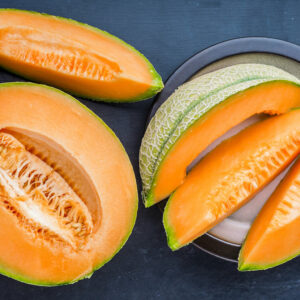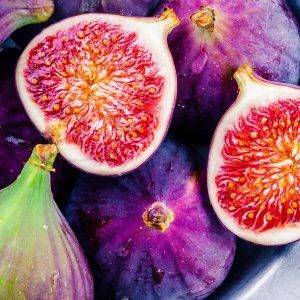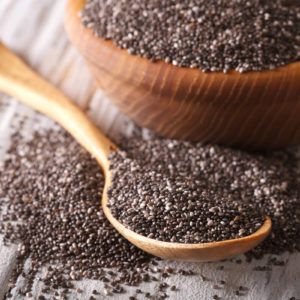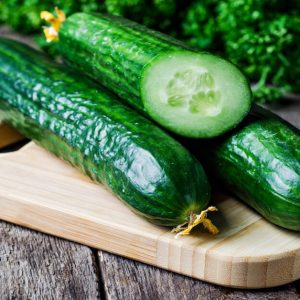
The health benefits of berries are known for their powerful effects on the body. They rank highest among most fruits in terms of antioxidant content and effectively combat cancer cells, and help reduce inflammation. New research on berries is constantly being published, which helps to emphasize their health promoting properties. Personally, I try to consume at least 1-2 cups of berries a day. In no particular order, here are 6 berries that can be used to improve your health.
1. Strawberries
This berry is high in antioxidant compounds called phenols. Phenols help protect against cancer, promote heart health and act as a potent anti-inflammatory. They are an acid fruit, so make sure you do not combine them with sweet fruits like bananas, figs, persimmons, papayas or dried fruits.
Strawberries protect against oxidative stress which can help reduce your risk of cancer and other oxidative stress mediated diseases. When strawberry extracts were applied to various human cancer cells, they effectively inhibited the growth of human oral, colon, and prostate cancer cells (1). Another study from Cornell University found that strawberries significantly inhibited proliferation of HepG(2) human liver cancer cells (2).
Rich in anthocyanins, strawberries (as well as cranberries, and blueberries) have demonstrated significant improvements in LDL oxidation, lipid peroxidation, total plasma antioxidant capacity, dyslipidemia, and glucose metabolism (3). Strawberries exert these effects by decreasing the activity of carbohydrate digestive enzymes, decreasing oxidative stress, up-regulating endothelial nitric oxide synthase and by inhibiting inflammatory gene expression and foam cell formation. These findings, taken together, prove that strawberries help to improve our cardiovascular health.
2. Raspberries
Raspberries are a rich source of ellagitannins, polyphenols and anthocyanins. One study examined raspberry’s effects on colon cancer cells and found that raspberry extracts significantly reduced the population of colon cancer cells in the G1 phase of the cell cycle, and thus reducing the number of cells entering the cell cycle (4). Another study found that raspberry extracts that were especially ellagitannin-rich had the capability to inhibit the proliferation of cervical cancer cells (5). In addition, Stoner and colleagues (6) studied the effects of raspberries on esophageal cancer and found that the number of esophageal tumours had been significantly inhibited by their ability to reduce DNA damage. In all, raspberries help to inhibit tumour promotion and progression as well as tumour initiation.
Raspberry ketones have also been recently hailed as an effective means to help boost metabolism. The structure of raspberry ketone is similar to the structures of capsaicin and synephrine which are known help combat obesity and alter lipid metabolism (7). One study fed rats a high-fat diet as well as supplementing them with raspberry ketones during a 10-week period. ANother group of rats were fed a high-fat diet for 6-weeks, and then fed the same high-fat diet for 5 weeks which was then supplemented with raspberry ketones. The ketones helped prevent elevations in body weight and also helped decrease the weight of rats (as well as hepatic triacylglycerol content) after they had been increased by the high-fat diet (7). The researchers concluded that raspberry ketones have an anti-obesity effect and help reduce complications of fatty liver disease by altering lipid metabolism.
3. Blackberries
Blackberries are also very high in antioxidants – they contain a purified compound of anthocyanin called cyanidin-3-glucoside (C3G) which possesses both chemopreventative and chemotherapeutic activities (8). C3G has been shown to inhibit the migration and invasion of lung cancer cells.
It has also been shown that Epicatechin, a compound representative of the flavonol group (which are high in blackberries), significantly limits brain damage following a stroke (9) – that is, if it is consumed and running through the circulatory before the stroke occurs. Surprisingly, even when consumed 3.5 hours after a stroke, epicatechin was still effective in limiting further neuronal damage (9).
In ancient times, blackberries were used as a natural remedy to help alleviate symptoms of gout. Blackberries are high in flavonoids, especially anthocyanins, and rank near the top of the ORAC chart (a chart that ranks fruits and vegetables on their antioxidant capacity – the higher, the more antioxidants). Antioxidants are great for individuals suffering from gout. Gout crystals are attacked by the immune system, creating abundant free radicals which are then neutralized by antioxidants. A diet high in antioxidant rich foods such as blackberries and other berries is a great way to alleviate gout inflammation.
4. Goji Berries
Goji berries have recently travelled from their home land China, to North America and have become an increasingly popular superfood. They are considered a “complete protein” (contain 19 amino-acids), are high in antioxidants, contain over 500 times the amount of vitamin C by weight than oranges, and are rich in B-complex and E vitamins (10).
Goji berries are known for their ability to stimulate human Growth Hormone’s (hGH) which naturally decreases as individuals age. Thus, this berry has specific anti-aging properties by increasing the levels of hGH. Additional reasons as to why this berry has anti-aging properties includes it’s rich source of antioxidants such as zeaxanthin and carotene, as well as polysaccharides including betaine, cerebroside, beta-sitosterol, p-coumaric, and many other vitamins. One lab demonstrated how goji berry polysaccharides can protect neurons against beta-amyloid peptide toxicity in neuronal cell cultures. They exhibit their effects through stress kinases and pro-apoptotic signalling pathways (11). So by preventing neuronal damage, goji berries can protect against age-related diseases like dementia and Alzheimer’s disease.
Goji berries are also good for increasing sexual drive as they increase testosterone levels which stimulates libido in men and women. As you age, sexual drive naturally reduces, so by consuming goji berries you can help stimulate testosterone’s production and thus improve your sex drive. Goji berries also help to increase stamina, mood and your overall well-being which will help reduce stress and help improve your sex life.
5. Blueberries
Blueberries are incredibly rich in antioxidants. They contain anthocyanins (maldivins, delphinidins, pelargonidins, cyaniding, and peonidins) as well as flavonols (kaempferol, quercetin and myricetin) and resveratrol. All of these anti-oxidants make it a potent anti-cancer food, and many studies have investigated it’s effects in reducing cancer.
For example, researchers at The University of Georgia found that phenolic compounds from blueberries are effective at preventing the growth of colon cancer cells and can induce apoptosis (cell death) (12). They also have inhibitory effects on the growth of liver cancer cells via DNA fragmentation and caspase-3 activity (13). In addition, blueberries have been shown to significantly reduce the growth of prostate cancer cells by altering the level of androgens present (14), as well as inhibiting growth of breast cancer cells through modulation of the phosphatidylinositol 3-Kinase pathway (15).
Blueberries have also been found to lower the risk of Parkinson’s and Alzheimer’s disease. Recent studies have found that flavonoids and polyphenols from berries, such as blueberries, accumulate in the brain following long-term consumption (16), and can influence cell-signalling cascades in the brain. Consuming antioxidant-rich berries can improve memory in aging animals, mainly due to polyphenol interaction with aging neurons which reduces stress-related cellular signalling and increases neuron capacity to function properly during aging (16).
6. Cranberries
Cranberries are well known for their ability to cure urinary tract infections (UTIs). In fact, recent research has shown that proanthocyanidins (PACs) are the main factor that helps eliminate UTIs via a mechanism that promotes bacterial anti-adhesion (17). The PACs essentially act as a barrier to bacteria that normally latch onto the urinary tract lining, and thus prevent accumulation of the bacteria that cause UTIs, and flush them out.
Cranberries also have beneficial anti-cancer effects, having been shown to inhibit the growth of several cancer cell lines, including breast cancer cells. Cranberry phytochemical extracts resulted in a 25% higher ratio of apoptotic breast cancer cell death as compared to control groups without cranberry supplementation (18). The phytochemical extracts of cranberries suppressed growth likely due to the initiation of apoptosis and G1 cycle arrest (18). They also protect against human oral, colon, and prostate cancer cell lines (19).
Cranberries are also great for the heart – studies have shown that in patients with coronary artery disease, consumption of cranberry juice helped reduce carotid femoral pulse wave velocity (a clinically relevant measure of arterial stiffness) (20). In addition, cranberries improve liver health due to their high vitamin C content. Vitamin C helps trigger production of glutathione in the liver, a key antioxidant needed for detoxification. Glutathione binds heavy metals and drugs in the bloodstream and makes it easier for the liver to cleanse your blood of these substances.
Sources:
(1) Zhang, Y., Seeram, N., Lee, R., Feng, L., & Heber, D. (2008) Isolation and identification of strawberry phenolics with antioxidant and human cancer cell antiproliferative properties. Journal of Agricultural and Food Chemistry, 56, 670-675.
(2) Meyers, K., Watkins, C., Pritts, M., & Liu, R. (2003) Antioxidant and antiproliferative activities of strawberries. Journal of Agricultural and Food Chemistry, 51, 6887-6889.
(3) Basu, A., Rhone, M., & Lyons, T. (2010) Berries: emerging impact on cardiovascular health. Nutrition Reviews, 68, 168-177.
(4) Coates, E., Popa, G., Gill, C., McCann, M., McDougall, G., Stewart, D., & Rowland, I. (2007) Colon-available raspberry polyphenols exhibit anti-cancer effects on in vitro models of colon cancer. Journal of Carcinogenesis, 6.
(5) Heather, R., McDougall, G., & Stewart, D. (2007) Antiproliferative activity is predominantly associated with ellagitannins in raspberry extract. Phytochemistry, 68, 218-228.
(6) Stoner, G., Chen, T., Kresty, L., Aziz, R., Reinemann, T., & Nines, R. (2006) Protection against esophageal cancer in rodents with lyophilized berries: potential mechanisms. Nutrition and Cancer, 54, 33-46.
(7) Morimoto, C., Satoh, Y., Hara, M., Inoue, S., Tsujita, T., & Okuda, H. (2005) Anti-obese action of raspberry ketone. Life Sciences, 77, 194-204.
(8) Ding, M., Feng, R., Wang, S., Bowman, L., Lu, Y., Qian, Y., Castranova, V., Jiang, B., & Shi, X. (2006) Cyanidin-3-glucoside, a natural product derived from blackberry, exhibits chemopreventative and chemotherapeutic activity. The Journal of Biological Chemistry, 281, 17359-17368.
(9) Dore, S. Potential efficacy and mechanism of action of the flavanol (-)-epicatechin in acute brain trauma. Nutrition, Trauma, and The Brain.
(10) Marchuck, M. (2005) Goji berry-ancient herb, new discovery. New Life Journal.
(11) Chang, R. & So, K. (2008) Use of anti-aging herbal medicine, lycium barbarum, against aging-associated diseases. What do we know so far? Cellular and Molecular Neurobiology, 28, 643-652.
(12) Yi, W., Fischer, J., Krewer, G., & Akoh, C. (2005) Phenolic compounds from blueberries can inhibit colon cancer cell proliferation and induce apoptosis. The Journal of Agricultural and Food Chemistry, 53, 7320-7329.
(13) Yi, W., Akoh, C., Fischer, J., & Krewer, G. (2006) Effects of phenolic compounds in blueberries and muscadine grapes on HepG2 cell viability and apoptosis. Food Research International, 39, 628-638.
(14) Schmidt, B., Erdman, J., & Lila, M. (2006) Differential effects of blueberry proanthocyanidins on androgen sensitive and insensitive human prostate cancer cell lines. Cancer Letters, 231, 240-246.
(15) Adams, L., Phung, S., Yee, N., Seeram, N., Li, L., & Chen, S. (2010) Blueberry phytochemicals inhibit growth and metastatic potential of MDA-MB-231 breast cancer cells through modulation of the phosphatidylinositol 3-kinase pathway. The Journal of Cancer Research, 70, 3594.
(16) Willis, L., Shukitt-Hale, B., & Joseph, J. (2009) Recent advances in berry supplementation and age-related cognitive decline. Current Opinion in Clinical Nutrition & Metabolic Care, 12, 91-94.
(17) Howell, A. (2002) Cranberry proanthocyanidins and the maintenance of urinary tract health. Critical Reviews in Food Science and Nutrition, 42, 273-278.
(18) Sun, J., & Liu, R. (2006) Cranberry phytochemical extracts induce cell cycle arrest and apoptosis in human MCF-7 breast cancer cells. Cancer Letters, 241, 124-134.
(19) Seeram, N., Adams, L., Hardy, M., & Heber, D., (2004) Total cranberry extract versus its phytochemical constituents: antiproliferative and synergistic effects against human tumor cell lines. Journal of Agricultural Food Chemistry, 52, 2512-2517.
(20) Dohadwala, M., Holbrook, M., Hamburg, N., Shenouda, S., Chung, W., Titas, M., Kluge, M., Wang, N., Palmisano, J., Milbury, P., Blumberg, J., & Vita, J. (2011) Effects of cranberry juice consumption on vascular function in patients with coronary artery disease. American Society for Nutrition, 93, 934-940.








THX FOR THE INSIGHT ON FRUITS THAT WE SHOULD KNOW ABOUT THAT KEEP US HEALTHY.
What about gooseberries?
Ahh yes! Another great berry 🙂 Maybe research online – I don't have anything written on those yet.